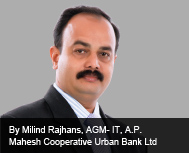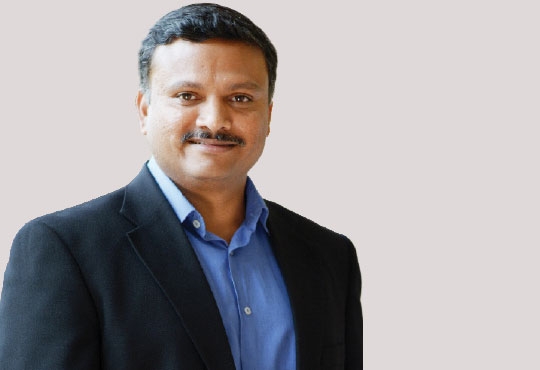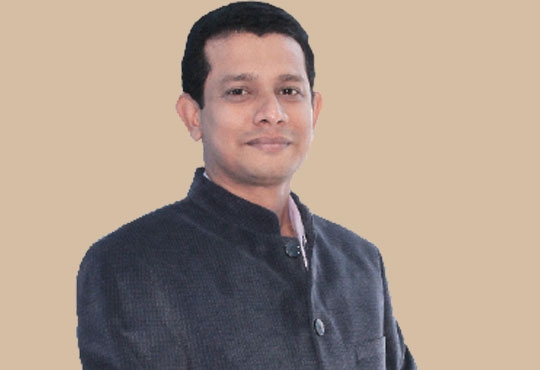
CIOTechOutlook >> Magazine >> December - 2014 issue
How Big Data Analytics Influence Banking IT
By
 Headquartered in Hyderabad, the A.P Mahesh Co-operative Urban Bank Limited commenced its operation in 1978.Mahesh Bank is the first co-operative Bank in Andhra Pradesh to introduce computerization in 39 branches across the state. The Capital to Risk Weighted Assets Ratio (CRAR) of the bank stood at 23 percent in 2014 as against minimum stipulation of 9 % prescribed by RBI.
Headquartered in Hyderabad, the A.P Mahesh Co-operative Urban Bank Limited commenced its operation in 1978.Mahesh Bank is the first co-operative Bank in Andhra Pradesh to introduce computerization in 39 branches across the state. The Capital to Risk Weighted Assets Ratio (CRAR) of the bank stood at 23 percent in 2014 as against minimum stipulation of 9 % prescribed by RBI. It was thought that implementation of Core Banking Solution (CBS) in Banks will be a panacea for all manual illnesses for Banking Processes and will satisfy growth objective spanning a decade or two. However, with the multi-fold increase in customer demands and business, Core Banking functionality, Scalability and Performance came to the fore.
The important factor is there is no native tool available in CBS to analyse the massive data (Big Data!) that it is being generated on daily basis. Further, no one is sure about what to do with this Data, how it has to be slice and dice for generating the meaningful information which is necessary to re-design the products as per the customer demand.
Now the era of providing affordable excellent products has emerged and will continue for years to come. Competition will increase day-by-day and there will be strong need to focus on customer centricity for business growth than any other thing.
Banking is the industry with largest consumers with variety of service offering which requires High Performance Computing (HPC). As such, there is no surprise that Big Data and its related technologies affect Banking Industry as like other industries.
Banks understood that the Data Analytics is required to predict the financial health. Big Data Implementations provide the opportunity to manage huge volumes of disparate data, at the right speed, within the time frame, facilitating Banks to have real time analysis of their customer data.
Banks are adopting Big Data technologies to capture the business preferences and predict trends from the social media presence. Social Media has emerged as a medium for banks to make out the customer insights, consumer habits and behaviour, helping Banks to design the products and services.
The recent trend of analysis of consumer purchase behavioural Data and sharing the same to the retailers is facilitating the retailers to provide special / discount offers on the products and services. The analysis also helps the sellers to showcase their offerings to the consumer whenever they are browsing the similar category product.
Today numerous mobile and sensor sources of data are emerged, so there will be too much requirements for rapid ingestion of huge amounts of diverse data types. In order to process these requirements, related tools and technologies are to be in place, wired or wireless networks should not struggle to provide the capacity needed to feed some of the planned big data implementations. In order to achieve desired results in time, the data is to be analysed strategically as it is ingested so that both the processes running concurrently should not conflict / disturbed. This specifically requires technology to be in place which can handle small jobs separately and big jobs separately otherwise in high throughput frequency the smaller jobs will get lost. Here the challenge will be in ensuring to allocate the resources for the smaller jobs. The technology shall provide the solution where the nodes are being dedicated automatically to these smaller jobs without disrupting the larger jobs requiring individual scheduling.
The more data Banks can collect, the more they can analyse to better predict the stocks. The better their capabilities to analyse the data, the more precise they will be about their business predictions. In short, unless better analysis and visualization tool, financial institutions will be unable to comprehend the relationship or pattern that exists within the data, defeating the point of using it at all.
Banking IT certainly will have challenges to mitigate the above scenarios strategically within their budget to get the competitive advantage of the technology without losing the opportunity of the Business requirements & its related pressure thereof.
CXO Insights
Changing The Outlook Towards Healthcare Challenges
By Ashish Sood, Head Technology, Nayati Healthcare & Research Pvt. Ltd.
Claiming the Next Level of Service Excellence
By Raj Mruthyunjayappa, SVP and Managing Director, Talisma Corporation Pvt. Ltd.
Strike a New Balance between Process Efficiency...




